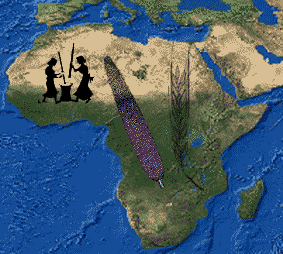|

|
 |

The Fifth International Workshop for African Archaeobotany will
be held 2-5 July, 2006
at the Institute of Archaeology,
University College London. For scheduled papers and absracts select days below.
|
The Fifth International Workshop for African Archaeobotany will
be held 2-5 July, 2006 |
|
|
Wednesday, 5 July, 2006 Session: Archaeobotany and political economy-- Agricultural innovation and State collapse in Meroitic Nubia: The impact of the Savanna package Dorian Q Fuller The Meroitic civilization of the Sudan was an expansive and long-lived state which left its mark on the landscape but it transformation into three successor states remains a subject of scholarly speculation and debate. I will argue that agricultural innovations in Lower Nubia, , including some introduced from both north and south, contributed to the collapse of the Meroitic state in as much they established the economic and demographic basis for political and military power of a splinter polity. Of key importance is the development of improved irrigation through the adoption of the cattle-powered saqia in the Third Century AD. This provides a basis for expanding cultivation in both the winter season, of staples like wheat and barley, and in the summer season, when sub-Saharan crops (Lablab, Vigna unguiculata, Sorghum and Penniseutum). Importantly this also provided a basis for the production of “cash crops” in Lower Nubia, including cotton and grapes. Increased staple production correlated with an increase in population density, while the cash crops, together with likely developments in other local craft production, provided a basis for wealth production within Lower Nubia to be controlled by local elites, as opposed to the Meroitic period when most wealth derived from a role played in trade between the Egypt (the Roman world) and Meroe. The changed productive potential of Lower Nubia provided the basis for the emergence of a local monarchy, who increasingly monopolized wealth and power. This same period, Third and Fourth Century AD, saw increasingly political and ecological instability in the central Sudan (at Meroe), but another important factor was the rise of splinter power in the north (Lower Nubia) which was made possible by agricultural transformations. ... return to 5 July schedule |
|
Send mail to d.fuller@ucl.ac.uk with questions or
comments about this web site.
|